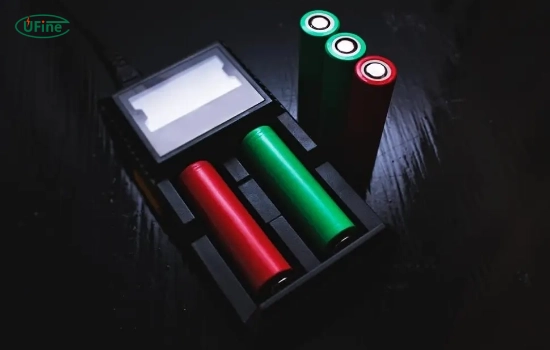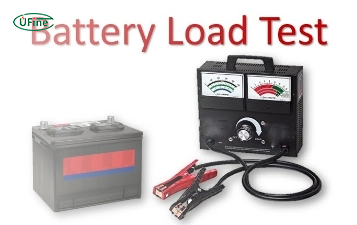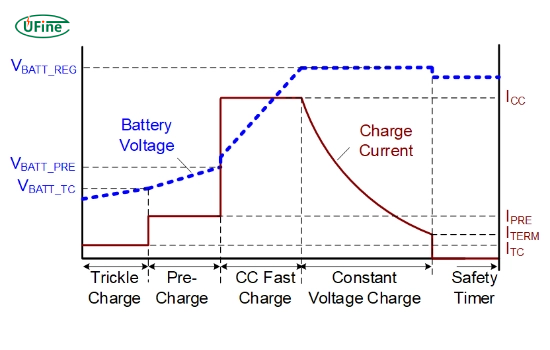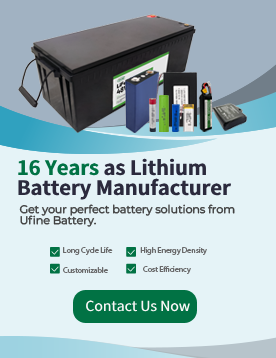
What is a 18650 Battery and How to Charge It Safely? The 18650 battery is a high-capacity rechargeable lithium-ion cell widely used in flashlights, laptops, power tools, electric vehicles, and vaping devices. In this guide, you’ll learn how to safely charge 18650 batteries, select the best 18650 battery charger, and maximize battery lifespan with step-by-step instructions and essential safety tips.
Common Applications of 18650 Batteries
18650 batteries power a wide range of devices including flashlights, laptops, electric vehicles, power tools, and vaping devices. Their compact size combined with high energy density makes them ideal for portable electronics that require reliable and rechargeable power sources.
Part 1. 18650 Battery charging principle
Charging an 18650 battery involves a precise two-stage process to ensure safety and long battery life:
- Constant Current (CC): Apply a steady current equal to 1C (e.g., 2500mAh battery = 2.5A) until voltage reaches 4.2V.
- Constant Voltage (CV): Maintain 4.2V while the current gradually drops to near zero, signaling full charge.
Using this method prevents overcharging, overheating, and capacity loss. Always use a certified 18650 battery charger compatible with lithium-ion cells.
Common Charging Mistakes to Avoid
Many users make mistakes such as using incompatible chargers, leaving batteries charging unattended for too long, or charging in extreme temperatures. These errors can lead to reduced battery capacity, safety risks, and even permanent damage. Always follow manufacturer recommendations and never attempt DIY charging methods.
Part 2. How to charge a 18650 battery step by step
- High Voltage Charging: Begin with 3.7V nominal voltage up to 4.2V. Recommended current: 1C for safe charging.
- Constant Voltage Mode: Hold 4.2V while current gradually decreases to 0.05C.
- Smart Charging: Use smart chargers that monitor voltage, temperature, and battery health to prevent overheating.
- Final Check: Stop charging if battery feels hot (>45°C), swollen, or damaged.
Charging time: 2–3 hours at 1C. For faster charging, ensure the charger supports higher currents safely.
Always avoid overcharging or using incompatible chargers to ensure safety and battery health.
How Environment Affects Charging
Charging temperature significantly affects battery performance and safety. The ideal temperature range for charging 18650 batteries is between 0°C and 45°C (32°F to 113°F). Charging outside this range can reduce efficiency and increase the risk of damage. Avoid charging batteries in direct sunlight, freezing environments, or excessively hot areas.
Fast charging vs. slow charging
Fast charging delivers a higher current to the battery, allowing for quicker replenishment of charge. For instance, a fast charger might deliver a current higher than 1C, enabling faster charge times. However, this can generate more heat, impacting long-term battery health. In contrast, slow charging involves lower currents, reducing heat generation and stress on the battery, which can prolong its lifespan. Balancing between fast and slow charging depends on the user’s priorities – speed or battery longevity.
Charging Safety Tips
Ensure your charger has built-in protections such as overcharge protection, short circuit prevention, and temperature monitoring. Never leave batteries unattended during charging, and avoid charging damaged or swollen cells. For added safety, charge batteries on non-flammable surfaces or inside fireproof containers. Improper charging can lead to overheating, fire, or explosion risks, so safety precautions are essential.
Charging Tips to Extend Battery Life
To maximize battery lifespan, avoid charging to 100% every time; instead, aim for about 80-90%. Avoid discharging below 3.0V to prevent cell damage. When storing batteries long-term, keep them at 40%-60% charge in a cool, dry place. Also, perform regular full charge-discharge cycles to help maintain accurate battery capacity readings and health.
Understanding Charging Rates: What is 1C?
The charging rate ‘1C’ means charging the battery at a current equal to its capacity. For example, a 2500mAh battery charged at 1C receives 2.5A current. Charging faster than 1C reduces charging time but generates more heat, which may shorten the battery’s lifespan.
Part 3. How to choose the 18650 battery charger?
Selecting the right charger is key to safe and efficient charging. Consider the following factors:
- Compatibility: Ensure the charger supports lithium-ion 18650 batteries and other chemistries if needed.
- Charging Current: Higher current chargers (up to 3A per cell) reduce charging time but require good heat dissipation.
- Safety Features: Overcharge protection, reverse polarity detection, and temperature sensors are essential.
- Portability: Compact chargers are ideal for travel and outdoor use.
- User Interface: LCD displays help monitor charging status.
| Charger | Max Current | Safety Features | Portability |
|---|---|---|---|
| Efest LUC Blu6 | 2A | Overcharge Protection, Reverse Polarity | Medium |
| XTAR VC4S | 3A | Temperature Sensor, Overcharge Protection | Compact |
| Nitecore SC2 | 2A | Advanced Safety Features | Portable |

Part 4. Types of 18650 battery chargers
- Smart Chargers: Detect battery type and adjust voltage/current for optimal charging. Ideal for charging 18650 batteries safely.
- Multi-bay Chargers: Charge 2–6 batteries independently. Efficient for users with multiple 18650 cells.
- Portable USB Chargers: Convenient for travel, supporting USB output 5V/2A.
- High-speed Chargers: Designed for fast charging while monitoring battery temperature to ensure safety.
Part 5. FAQs about charging 18650 batteries
How to charge an 18650 battery safely?
Use a compatible 18650 battery charger with CC/CV charging mode. Avoid overcharging, extreme temperatures (0°C–45°C), and never leave batteries unattended. Smart chargers can automatically adjust voltage and current for optimal safety.
What is the best 18650 battery charger?
Smart chargers with overcharge protection, temperature monitoring, and LCD displays are recommended. Popular options include XTAR VC4S, Nitecore SC2, and Efest LUC Blu6. Always check compatibility with your 18650 battery.
Can I charge multiple 18650 batteries together?
Yes, but only with a multi-bay charger that has independent channels. Avoid charging batteries of different brands, capacities, or protection types together, as mismatched characteristics can affect safety and performance.
Can I use a regular charger for 18650 batteries?
Only if the charger fits the battery and supports the correct voltage and current. Always verify the charger’s specifications before use to prevent overcharging or damage.
How long does it take to charge an 18650 battery?
Typically, charging an 18650 battery at 1A takes about 2–3 hours. Faster charging is possible with higher currents, but this may reduce battery lifespan due to heat.
Do I need a smart charger for 18650 batteries?
While not strictly required, smart chargers are recommended as they optimize charging, prevent overcharge, and monitor temperature to improve safety and battery lifespan.
What’s the difference between protected and unprotected 18650 batteries?
Protected batteries have built-in circuits for safety against overcharge, over-discharge, and short circuits. Unprotected batteries lack these features, so extra caution is needed during charging.
Is it normal for the battery to feel warm during charging?
A slight warmth is normal, especially at higher currents. Excessive heat, however, is a warning sign; stop charging immediately if the battery feels too hot.
Can I leave 18650 batteries on the charger overnight?
It’s generally not recommended to leave batteries charging unattended, including overnight, unless the charger has automatic cut-off and safety features.
What should I do if my 18650 battery is swollen?
Stop using and charging the battery immediately. Swollen batteries are unsafe and must be disposed of properly according to local regulations. Do not attempt to puncture or repair them.
Part 6. Conclusion
Proper charging is key to the safety and longevity of 18650 batteries. Choosing the right charger, following charging guidelines, and paying attention to environmental factors and safety precautions will help you get the most out of your batteries. For high-quality 18650 batteries with chargers and customized solutions, visit our product pages or contact customer support.
Related Tags:
More Articles

Battery Load Test: A Comprehensive Guide
Step-by-step battery load test guide for car, solar & industrial use. Learn how to load test a battery, interpret voltage charts, and avoid common mistakes.
The Comprehensive Guide to Battery Balancing and Battery Balancer
Discover how battery balancers improve lithium battery performance, lifespan, and safety. Learn types, functions, and tips to choose the right balancer.
What Is the Best Voltage for a Chainsaw Battery?
Compare 12V-80V chainsaw batteries for light pruning, medium firewood, and professional cutting. See best battery chainsaw with runtime charts and safety tips.
Lithium VS. Alkaline Batteries: A Comprehensive Comparison
Lithium batteries last 3–7× longer than alkaline and perform better in cold weather. Compare lifespan, cost, safety, and best uses to choose the right battery.
Comparing Lithium-Sulfur and Lithium-Ion Batteries: Which is Right for You?
Compare lithium-sulfur (Li-S) and lithium-ion batteries on energy, lifespan, cost, safety, and applications. Best choice for drones, EVs, and electronics.



